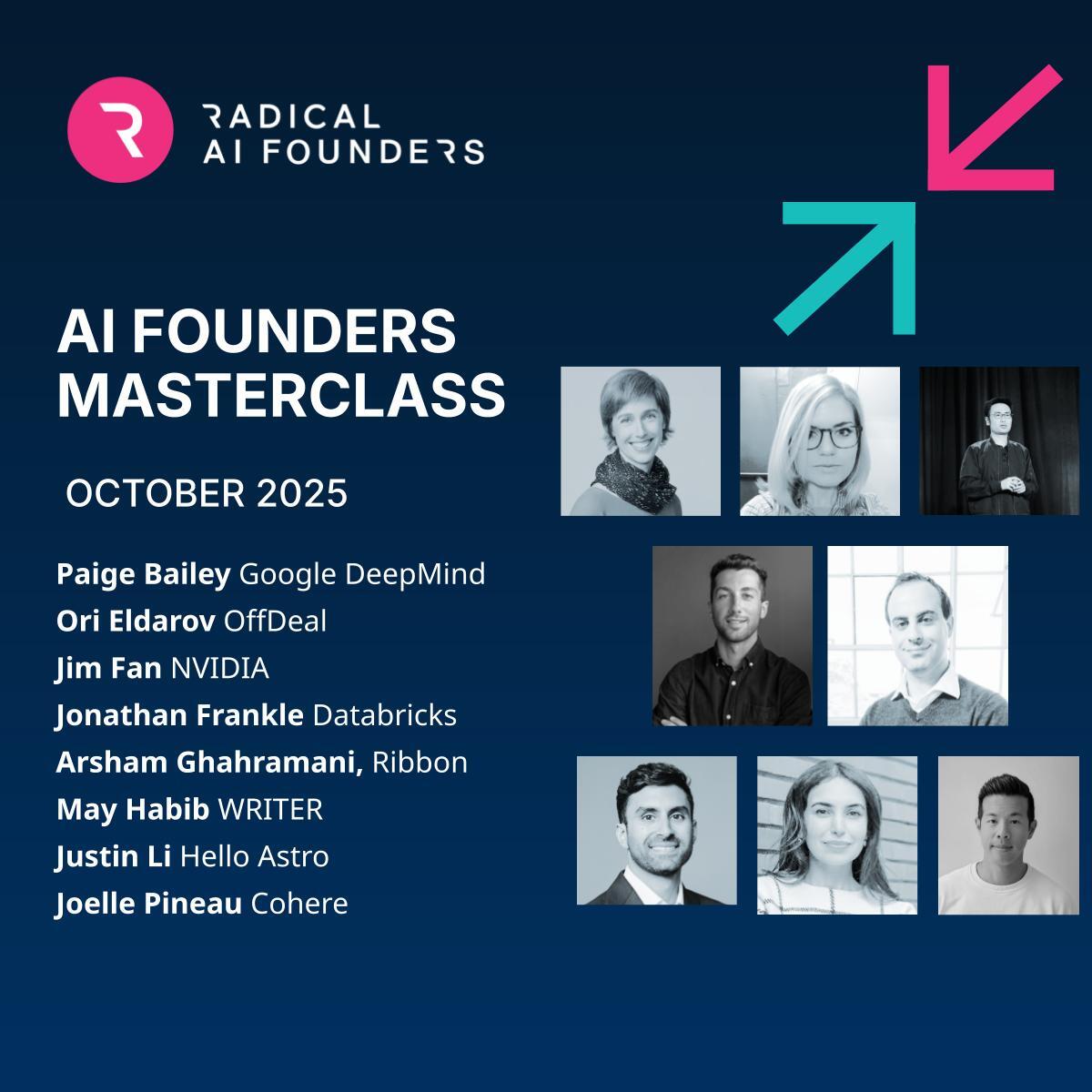This week, we feature insights on the G7’s newly released Statement on AI for Prosperity. As the world’s leading economies outline their blueprint for harnessing AI’s transformative potential, we explore the strategic implications for the AI ecosystem and examine how these commitments could reshape the competitive landscape in an era of accelerating technological advancement.
The leaders of the G7 nations recognize that the future of global prosperity is inextricably linked with Artificial Intelligence, and their Statement on AI for Prosperity, released last week, aims to serve as a blueprint for harnessing AI for economic growth and societal benefit. For the builders in the AI ecosystem, the plan offers a glimpse into the future of Western industrial strategy. The statement is also notable for what (or rather who) is not mentioned, as China executes a coordinated national strategy that is scaling AI development and deployment at a breathtaking speed.
Here are our five key takeaways from G7 Statement:
- The Public Sector AI Upgrade
Through the new G7 GovAI Grand Challenge and G7 AI Network (GAIN), members committed to collaborating to make public services more efficient. For these initiatives to be effective, they must be matched with procurement processes that can adopt innovations at a speed that reflects the dynamic nature of the technology. This signals an important emerging market for AI companies. In an encouraging first step, the UK and Canada committed this week to work with Radical portfolio company Cohere on ways to use the firm’s technology in government operations.

- Fueling the SME Adoption Engine
The G7 correctly identifies small and medium-sized enterprises (SMEs) as the “backbone of our economies” and has launched an AI Adoption Roadmap to help them become “AI-powered.” The roadmap commits to sustaining investment in AI adoption programs and provides access to compute and digital infrastructure.
- A Strategic Imperative for Talent
The future of work is undergoing an enormous shift due to the capabilities of AI systems. The G7 emphasizes the need to build a “resilient, AI-ready workforce,” preparing entire populations for new roles and industries. At the same time, attracting the world’s top innovators remains a competitive necessity, especially with nations like China producing STEM graduates at an unprecedented scale. A successful strategy ultimately requires a multipronged approach: 1) foster a workforce that can effectively leverage and adapt to AI technologies; 2) build a domestic pipeline of highly educated AI talent; and, 3) implement streamlined immigration policies to ensure G7 nations remain the premier destination for the architects of an AI-powered future.
- Confronting the AI Energy Challenge
The G7 identifies access to energy as foundational infrastructure that underpins the AI age and recognizes that its consumption has become a critical bottleneck. The path forward, as outlined in their plan, is through targeted innovation. By committing to “cooperate on innovative solutions to address energy challenges,” the G7 is championing the development of more efficient AI models and better-optimized data centers.
- Bridging the Global AI Divide
The commitment to expand partnerships with emerging markets aims to foster inclusive growth and ensure that AI is a tool for progress. This effort also serves to offer a transparent alternative for AI development and governance in a world where different models are competing for global influence and adoption.
From Vision to Investment
Translating the ambitious vision outlined by the G7 into market reality requires a relentless focus on creating the underlying conditions for growth. In a global arena where China’s top-down push for technological dominance accelerates development, the G7’s competitive advantage lies in its ability to unleash the dynamism of its private sector.
With this in mind, the priority must now shift from planning to execution. This means actively reducing the regulatory friction and policy uncertainty that can impede and slow down private investment. It requires immigration regimes that afford access to global talent, programs that offer clear and compelling incentives for private R&D, and an effort to ensure that access to high-performance compute is treated as a utility for AI innovators, not a luxury.
The G7 has set the stage. The urgent task now is for member nations to build the most fertile ground for investment on the planet and empower their innovators to lead the way.
Read the full G7 Leaders’ Statement on AI for Prosperity here.
AI News This Week
-
A.I. Can Already See You in Ways You Can’t See Yourself (The New York Times)
AI’s pattern recognition capabilities are shifting how machines perceive and interpret human behaviour across multiple biological systems. In radiology, AI can detect early-stage cancers and cardiovascular disease from subtle image patterns invisible to human eyes. Blood work analysis enables AI to diagnose autoimmune diseases by mapping immune system receptors and predicting transfusion needs. AI can even reconstruct visual imagery from brain activity using fMRI data, suggesting future possibilities for translating thoughts, memories, and dreams. While the human brain remains a “black box” to neuroscientists, AI’s pattern recognition powers may ultimately help decode the mysteries of human consciousness and cognition.
-
Submerging Servers in Liquid Helps Data Centers Cut Energy Use (Bloomberg)
Data centers are adopting immersion cooling technology to address massive energy consumption as AI drives computing demands. Up to 40% of data center energy goes toward cooling hardware, making it a prime target for efficiency improvements. Startups are now experimenting with submerging entire server racks in non-flammable synthetic liquid. This approach can reduce energy consumption by roughly 50% compared to traditional air cooling while addressing water usage concerns (an average of 100 megawatt data centers consume 2 million litres of water daily).
-
AI is Turning the Ad Business Upside Down (The Economist)
AI is transforming creative processes in the advertising industry that were once considered immune to automation. AI allows for improved ad targeting, with startups like Radical portfolio company Firsthand deploying AI-powered agents that act as brand representatives and deliver expertise in real time to guide consumers. As shopping increasingly moves to AI-powered chatbots and agents, the industry faces a future where AI will create ads aimed at other AI systems, with brands already developing promotional material designed to influence large language models rather than human consumers.
-
The Newspaper That Hired ChatGPT (The Atlantic)
Print media, already battered by decades of digital disruption, now faces the impact of generative AI as publishers rush to harness the technology. While several major news publications have entered corporate partnerships with AI companies for translation, headline drafting, and article summaries, the Italian newspaper Il Foglio has taken a bolder approach by using AI to write entire articles. The paper now plans permanent weekly AI sections, with Editor Claudio Cerasa identifying AI’s strengths as research, summarizing documents, and synthesizing vast information beyond human capacity. Cerasa believes journalists with sufficient creativity remain irreplaceable, but warns that aspects of legacy journalism are at risk of automation.
-
Research: Self-Adapting Language Models (MIT)
Researchers from MIT have developed Self-Adapting LLMs (SEAL), a framework that enables language models to generate their own training data and adaptation strategies. SEAL allows LLMs to restructure information, specify optimization parameters, and create synthetic training examples through natural language “self-edits.” The system uses reinforcement learning to train models to produce effective self-edits, with downstream task performance serving as the reward signal. SEAL improved question-answering performance in knowledge incorporation tests from 33.5% to 47.0%, outperforming synthetic data generated by GPT-4. This approach represents a shift toward language models capable of self-directed adaptation, mirroring how humans naturally restructure and rewrite information to optimize their learning processes.
Radical Reads is edited by Ebin Tomy (Analyst, Radical Ventures)



